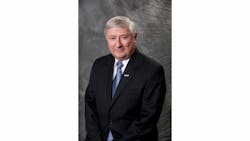NextGen, as it’s commonly called, essentially moves air traffic management from the land to the skies. Instead of relying on ground-based radar and audio broadcasting systems, the new technology uses satellite-based global positioning, data networking and digital communications.
These advancements in airplane, airport and air traffic systems will significantly reduce the environmental impact of airports, improve safety and make air travel more convenient for everyone. They also have the potential to dramatically increase the efficiency of modern air travel. With better traffic management and more efficient use of airspace and airfields, aircraft can be cleared to proceed more quickly; take simpler, more direct routes; and follow automatically scheduled departures and landings.
The systems also increase airport and airspace capacity. Because traffic can be managed so precisely, airports can potentially set multiple departure paths from each runway and direct planes to cruising altitude much faster.
But what good is an on-time plane if the terminal is too crowded or not appropriately organized to accept the arriving passengers.
Airports need to start actively planning for these improvements with airlines, air traffic officials and their communities to find the best compromise for reducing noise, improving routing and making airports more efficient. In fact, some airports, airlines and flight-based businesses are implementing selective portions of the technology already. The technology for precise satellite guided routes is already in place. Full phase-one U.S. implementation of the core set of surveillance avionics necessary to support additional operational capabilities is scheduled for 2020.
As one of the few civil engineering firms offering expertise across a broad spectrum of aviation planning, design and engineering, HNTB’s experience is that airports need to get involved in airspace redesign that will take advantage of NextGen very early in the process. The redesign process can take two to three years for simple re-design and can take much longer in complicated airspace overlying metropolitan areas with serious noise concerns. However long it takes, airports need to be actively involved in the process to make sure the various stakeholders including the community are involved and get accurate information on upcoming changes.
Smart planning and collaboration begin with identifying and communicating the key benefits and impacts of NextGen to stakeholder groups today.
Outcomes include multiple environmental benefits
In addition to providing improved safety, efficiency, communication and workload for pilots and air crew, NextGen will result in many environmental benefits. More efficient flight paths mean planes will be in the air for shorter periods, reducing fuel use, emissions and noise. The Intergovernmental Panel on Climate Change estimated in 1999 that “improvements in air traffic management could help to improve overall fuel efficiency by 6 percent to 12 percent.” Testing just the optimum profile descent approach alone, an air cargo service out of Louisville, Ky., recently reduced noise by 30 percent, lowered nitrous oxide emissions by 34 percent and used 250 to 465 pounds less fuel per flight.
An airspace redesign was recently completed for the Houston Metroplex in May of 2014. It is expected to result in 648,000 fewer nautical miles flown in the area per year, save up to 3 million gallons and $9.2 million of fuel.
NextGen also has great promise for increasing airport capacity and decreasing land use. Existing regulations normally require a 4,300-foot parallel separation between runways for fully independent utility. With NextGen technology, the requirement may be able to go to just 2,000 feet or less. NextGen also allows for closer spacing of aircraft than previously available while still providing protection from turbulence produced by very large and heavy aircraft. New separation standards enacted in Atlanta in June 2014 are resulting in a 24 percent reduction in departure queue for Delta Airlines.
Safety and convenience also improve
The Federal Aviation Administration predicts that increases in demand, complexity and frequency of flight could challenge the current exemplary U.S. flight safety record. It expects NextGen to significantly increase safety by giving pilots and controllers a much more complete and current picture of their position relative to other aircraft, ground traffic and geographic obstacles throughout all phases of flight.
Passengers, of course, will benefit from these efficiencies, as well. Shorter and more predictable flights are sure to make flying and shipping easier and more convenient.
Worldwide implementation is challenging and complex
Not all NextGen changes will benefit everyone. For example, while it reduces overall noise, people living under the new, consistently used routes could experience more frequent and predictable noise pollution. This issue, in addition to funding and tax issues related to any airport improvement, often take at several years to resolve.
At the same time community issues are being resolved, the Federal Aviation Administration must develop the associated rules and operating procedures. In addition, airlines must purchase and install expensive equipment. Implementing NextGen also requires global consistency and coordination. Already, the industry is concerned about uneven implementation and associated taxation in Europe and its effects on specific airports, airlines and locations.
Airlines, businesses, airports, air traffic and community representatives must continue working to prepare for the multi-year transition to NextGen. This means understanding all the issues involved, from design and cost to community and environmental issues, and from air space planning to navigational aids. Some of the easy airspace design has been accomplished. It is time to tackle the difficult airspace redesign in the very complex multi airport metropolitan areas. The challenges to succeeding are many but the benefits to the entire aviation system are greater.
A multi-stakeholder approach can ensure the best possibility of win/win solutions for everyone involved.
Greg Albjerg is national director of airfield and airspace planning for HNTB. He is a registered professional civil engineer, an active, licensed pilot with instrument rating and a former Federal Aviation Administration air traffic controller. He has been directly involved in a wide variety of airport engineering, planning and environmental projects, ranging from small, general aviation airports to major air carrier airports. Most recently, he served on the ACRP panel that developed advanced simulation best practices. Contact him at (763) 852-2100 or [email protected].




